English
Shikoku Pilgrimage gear questions for beginners answered
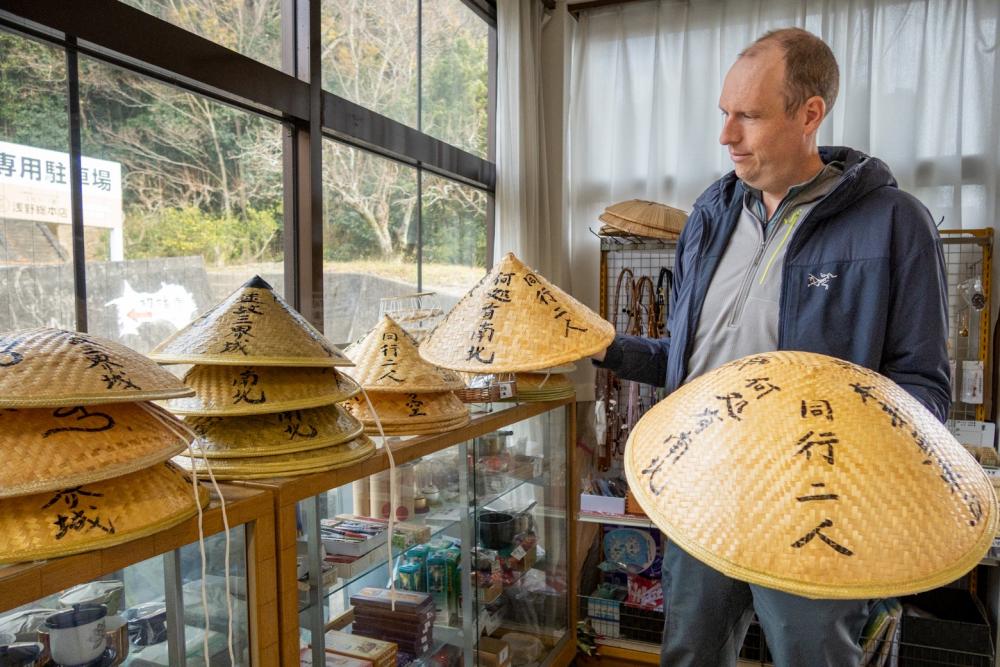
When making the Shikoku Pilgrimage, you probably would like to wear the white attire and a sedge hat to immerse yourself in the pilgrim way of life.
But there are so many different kinds of pilgrimage gear, and it’s hard to know what to choose.
We asked a lot of questions to Mr. Satoshi Asano, the owner of Sumotoriya Asano Sōhonten, a pilgrimage gear and Buddhist altar fittings store on the street leading to Kirihataji, the tenth temple of the Shikoku 88 temples pilgrimage.
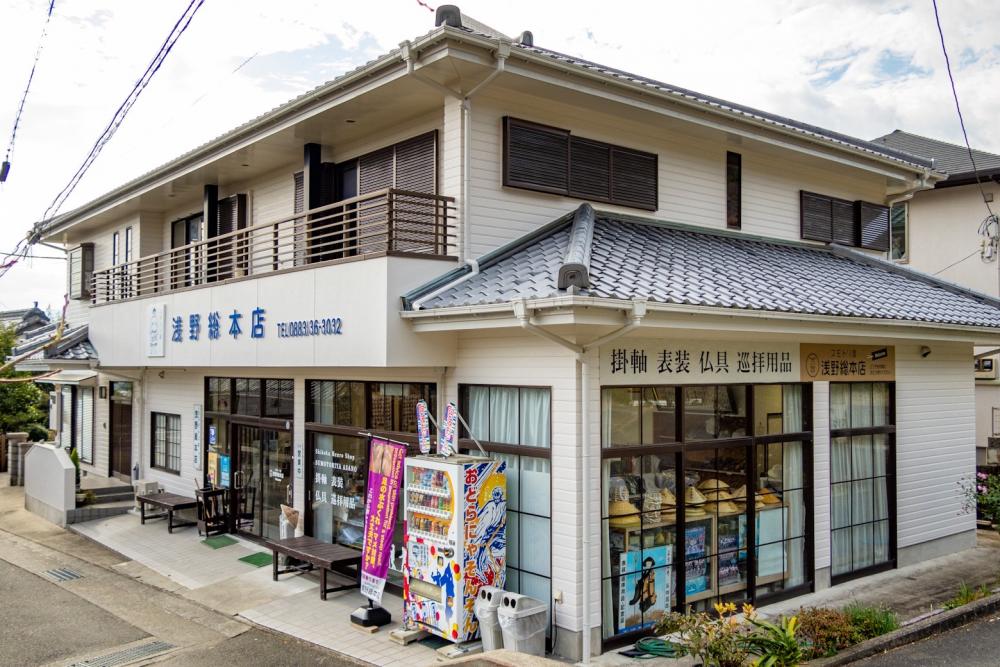
Sumotoriya has been here for generations since its establishment in the Meiji era (1868-1912) and Mr. Asano is the fifth-generation owner of the store.
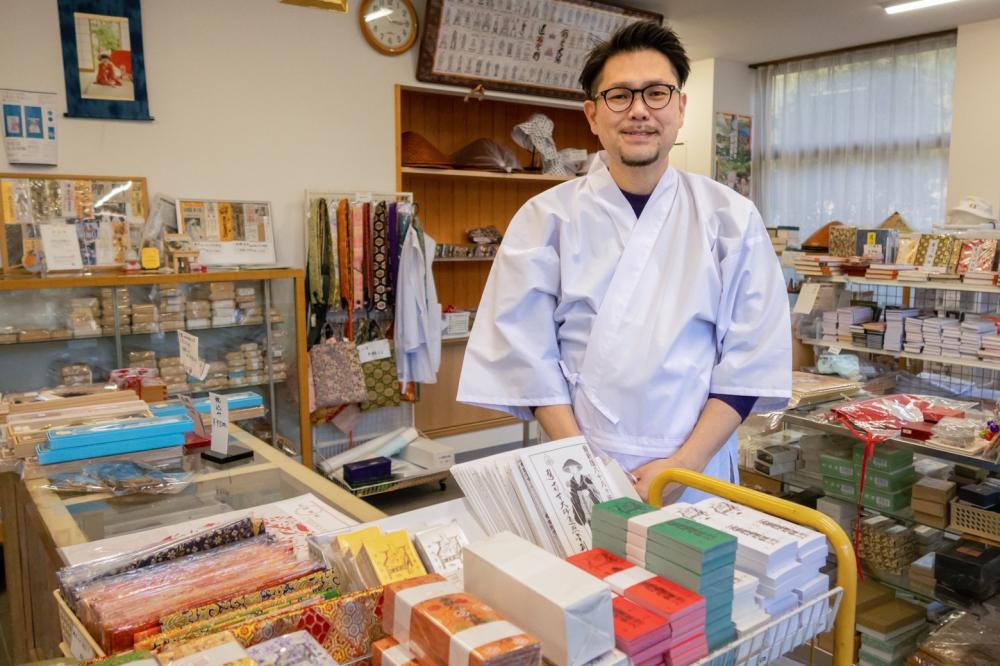
Sedge hats: dome shape or conical? Do Shikoku pilgrims have to wear the pointed one?
Though the image of a pilgrim in the conical sedge hat is very common, you can wear either shape for the Shikoku Pilgrimage.
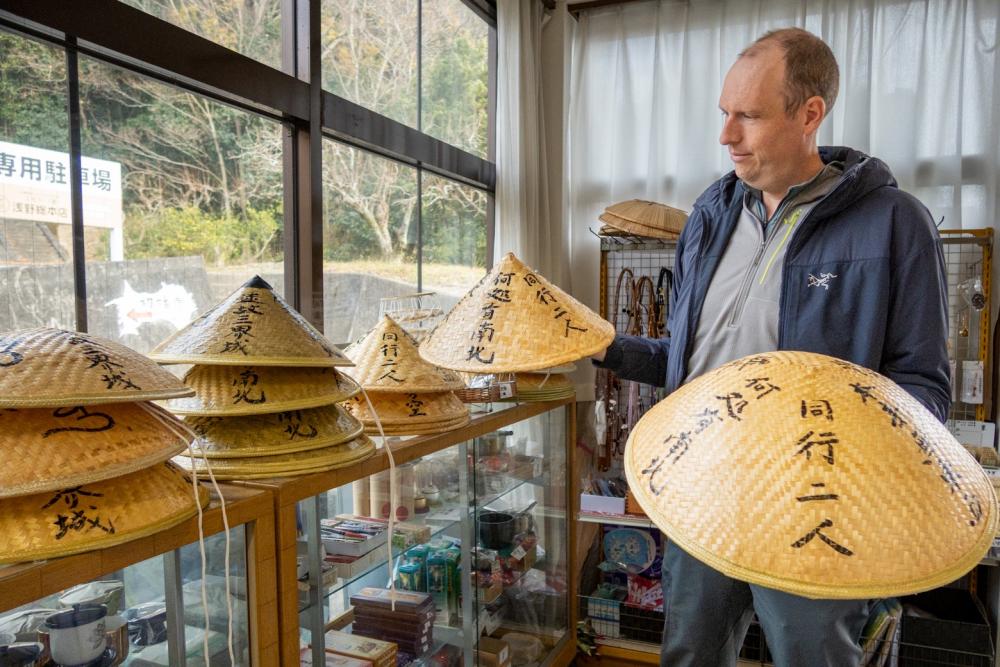
The dome one is not only for the monks on almsgiving. Farmers still sometimes wear it while working outside, as it is a very good sunshade that can cover the entire face and shoulders. It also protects you from the rain.
When taking off the hat for a break, we often turn it upside down and place it on the ground, and the pointing top of the conical hat can easily tear.
It might be fun to observe what kind of hats other pilgrims wear while walking.
I think very experienced pilgrims who have been on the Shikoku pilgrimage many times tend to wear doom-shaped ones.
A gotoku (rattan/bamboo frame under the hat) creates a gap underneath the headpiece, allowing for a comfortable and well-ventilated feeling. Gotoku are one size fits all, so if your head is smaller and fits inside, try adjusting the size by wrapping a thin towel around it.
If you don't tie the hat strings properly, it would irritate you while you’re walking or whenever the wind blows. Also, the bare hard rattan or bamboo may rub and hurt your head. This is probably the main reason why people eventually stop wearing the sedge hat even if they got it at the start.
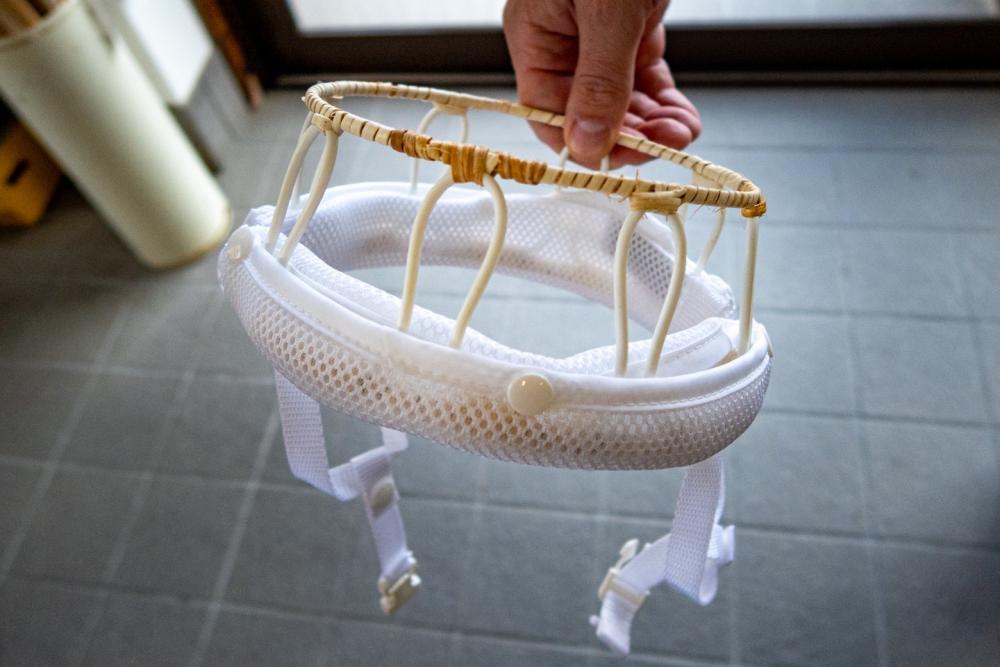
Tying the hat strings properly require practice, and it may be frustrating to untie and re-tie it every time you take it off for a break. Some people are bothered about the string digging in under their chin.
There is a special accessory that covers the gotoku with padding and snaps the cord like a helmet for construction sites.
The pilgrimage books: large or small? Does it have to be one specifically for the Shikoku Pilgrimage?
Visiting temples/shrines and collecting the stamps has is very popular.
In the Shikoku Pilgrimage, the book is called Nokyocho, not Goshuincho, which is more common term to refer temple/shrine pilgrimage books.
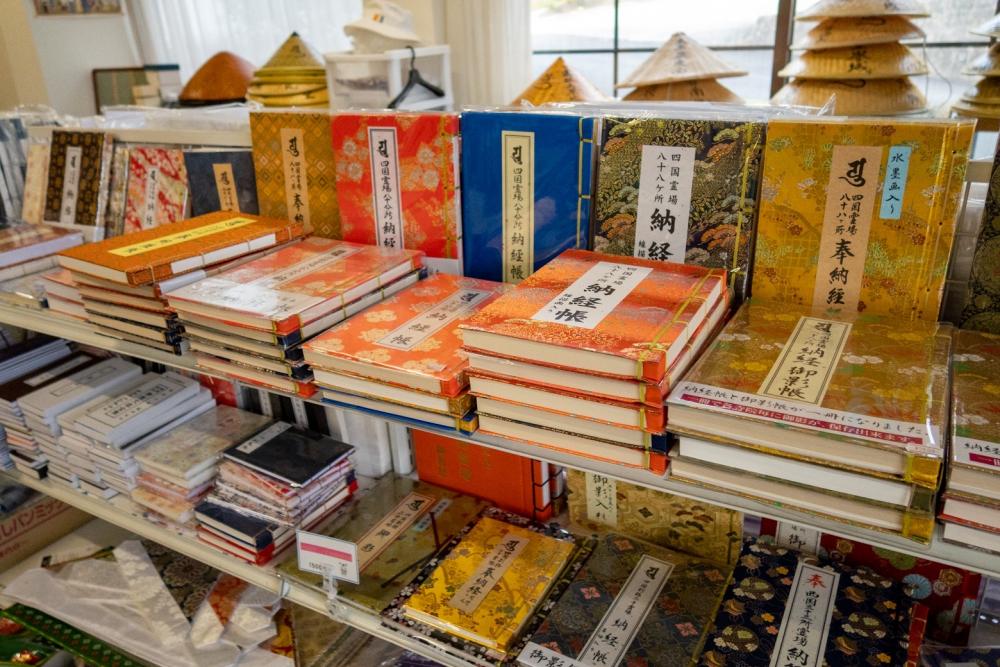
There are so many colors and sizes of the pilgrimage books so I understand it would be difficult to know which one to get.
Generally speaking, B5-size large pilgrimage books have more variety compared to the smaller ones.
At general stationary stores, the smaller sized books are much more commonly available. Various shrines and temples make and sell their own original design pilgrimage books these days, and many of them are also in this smaller size.
Shikoku Pilgrimage pilgrimage books have the smaller size too and ae popular among walking pilgrims who want to lighten their luggage as much as possible.
Keep it in mind that the smaller stamp book is not suitable for making multiple pilgrimages.
In the Shikoku Pilgrimage, you use the same stamp book to receive stamps no matter how many times you make the pilgrimage. Each time, the temples put another red stamp on the same page, shifting it slightly from the previous one. The larger stamp book has enough space on pages for multiple stamps.
Some pilgrim veterans who have visited temples dozens of times, sometimes more than a hundred times, have pilgrimage books whose pages turned completely red. Some history museums and pilgrim archives also have such red pilgrimage books from the past displayed.
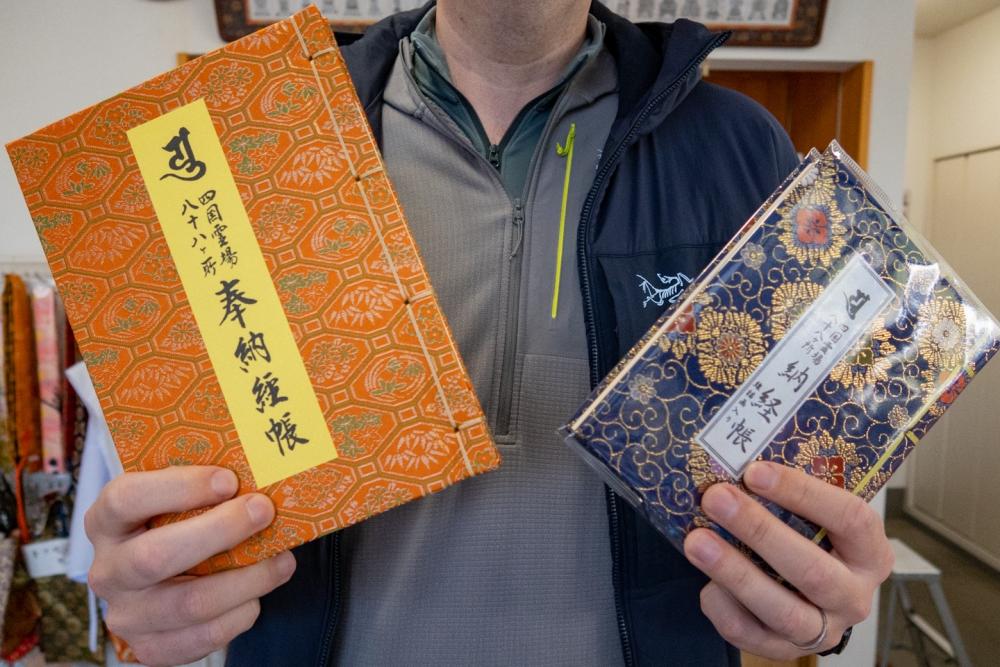
For the Shikoku Pilgrimage, use a stamp book specifically designed for it.
Since there are as many as 88 temples stamps, regular pilgrimage books widely available at stationary stores don’t have enough pages.
Shikoku Pilgrimage pilgrimage books have the temple’s number on each page. This is helpful for pilgrims who are not visiting all 88 temples in one go.
Also, the page numbers are beneficial for the pilgrim themselves, because it is easy to notice if you accidentally missed a temple and didn’t get the stamp.
Is the white attire of the pilgrims all the same?
When it comes to how pilgrims look, people would think of people all in white from head to toe.
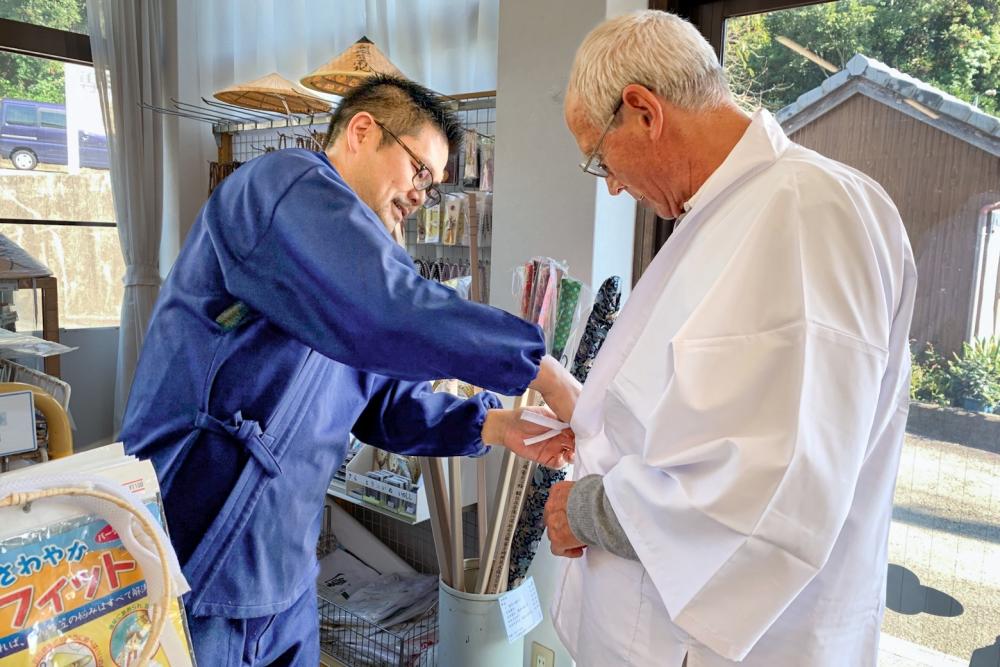
The white gown actually has various shapes, long sleeves or sleeveless and made of different fabrics. But all of them must have the letters of “南無大師遍照金剛” printed on the back.
The most traditional one is the sleeveless vest-like type and called “Oizuru.”
The Japanese used to wear kimono all the time with big wide sleeves. The sleeveless while gown was easily put on over their kimono.
If you are a walking pilgrim and want travel as light as possible, the Oizuru type is surely the lightest.
But take a moment and think about what kind of environment you will be on the trails. You will be walking in strong sunlight, often without shade for many kilometers. The long sleeve white gown can cover your arms to prevent getting sunburnt.

Some of the modern pilgrim white gowns with long sleeves are made of synthetic, lightweight, quick-dry sportswear material. They are very breathable and comfortable to wear even in the summer heat.
The cotton type is slow to dry and gradually turns yellowish after being worn and washed every day, so walking pilgrims should consider the quick-dry synthetic fiber ones.
Are the colorful ribbons pilgrims wear around their necks ornaments?
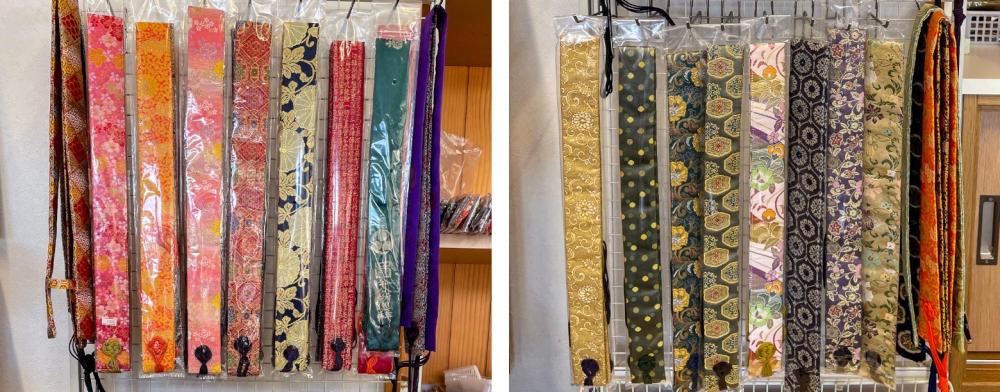
The wide ribbon is called a wagesa.
It’s the simple form of a Buddhist stole that has the same function as the much larger ones monks wrap around their bodies.
I usually suggest all pilgrims to wear the wagesa as the formal attire for visiting temples and meeting their main deities, regardless of individual reasons why they make the Shikoku Pilgrimage.
For the Shikoku pilgrimages, you see a lot of wagesa are embroidered with “四国八十八ヶ所巡拝” (the Shikoku 88 temples pilgrimage) or “南無大師遍照金剛” (I have a faith in Kobo-daishi) on the surface. Some pilgrims choose a plain color version with no writing or with the religious crest of their own Buddhism sect.
There is no rule, so you can pick up whichever color and pattern fabric you like.
Keep in mind you need to take off the wagesa when going to the restroom and while eating.
The pilgrim staffs look bulky and heavy to hold and carry...
The long wooden sticks for pilgrims have a polished smooth surface and their edges are rounded for an easy grip.
Longer sizes are available for the tall. Southern Japanese hemlock, Japanese cedar, and cypress are commonly used and the weight of a staff slightly varies depending on which species is used. Pick up each one and try to see how you feel when holding it. The Japanese cedar ones are a bit lighter than cypress.
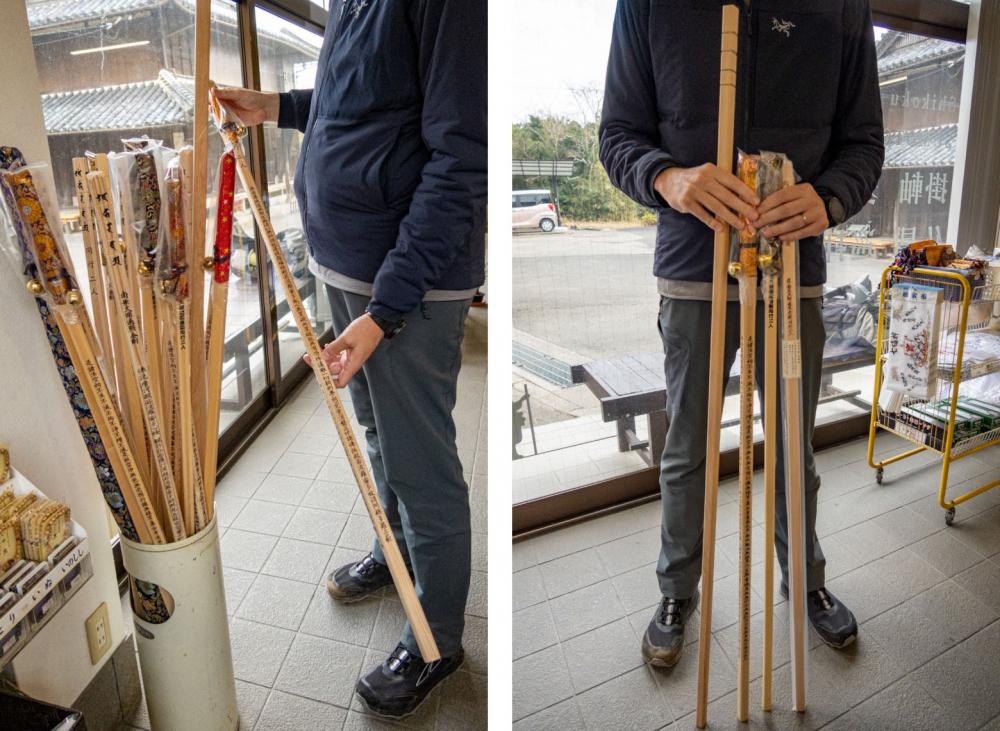
Some staffs have the Heart Sutra written on the entire surface, while others are plain.
What they all have in common is the Sanskrit character representing Kobo-Daishi written on the head. The pilgrim staff is regarded as Kobo-Daishi himself in the Shikoku pilgrimage, meaning a pilgrim is always traveling with the sacred person.
That is why usually the pilgrims use a brocade cover on the head of their staff. You can't grip his head in your bare hands, can you?
Do the prayer beads have to be the long type?
Most of the prayer beads found at pilgrimage supply stores in Shikoku and stores in Koyasan are long, like necklaces.
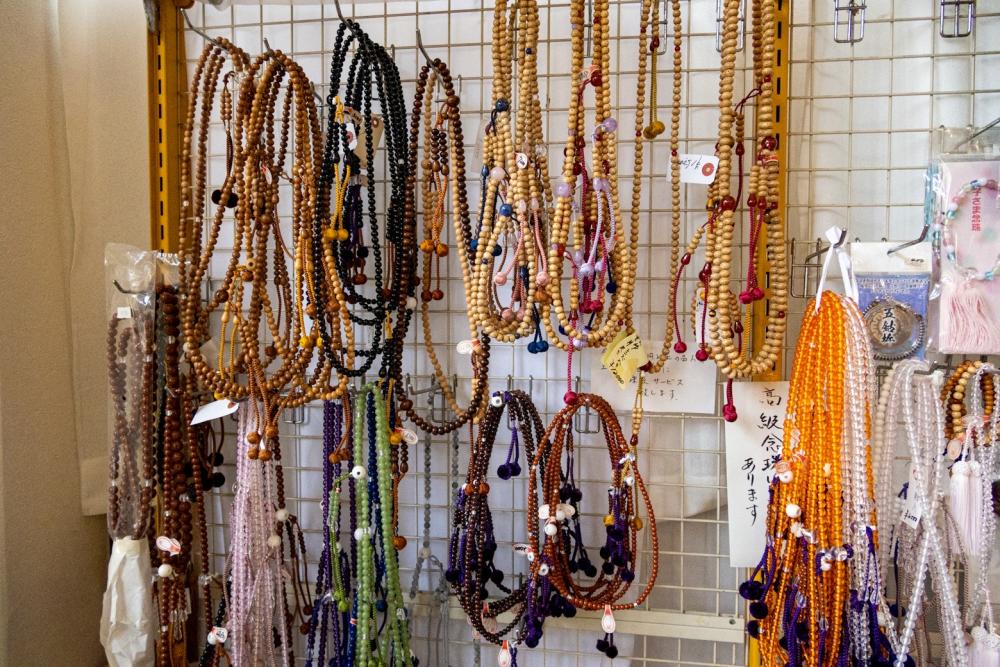
You may use long or short, whatever type you already have or prefer.
If you still want to get long beads, there is a wide range of colors, materials, and prices, so you can choose the best one for you.
Long-type prayer beads really look like a necklace, but even so, you must not wear it around your neck when you are walking or taking a break. Put them in your bag when not using them.
I would like to make a pilgrimage on foot, but I'm worried about getting lost...
In old times, the pilgrimage trails, both in villages and in mountains, were the main daily travel route for the locals. But, compared to today’s straight multi-lane roads for cars, they are narrow and winding alleys, going between houses, and it’s easy to miss the correct turning point and get lost.
But don't worry.
There are guidebooks showing the traditional pilgrimage routes in detail on today’s maps. Not only in Japanese but in English for the rapidly increasing number of international pilgrims who come all the way to Shikoku for walking the pilgrim trails.
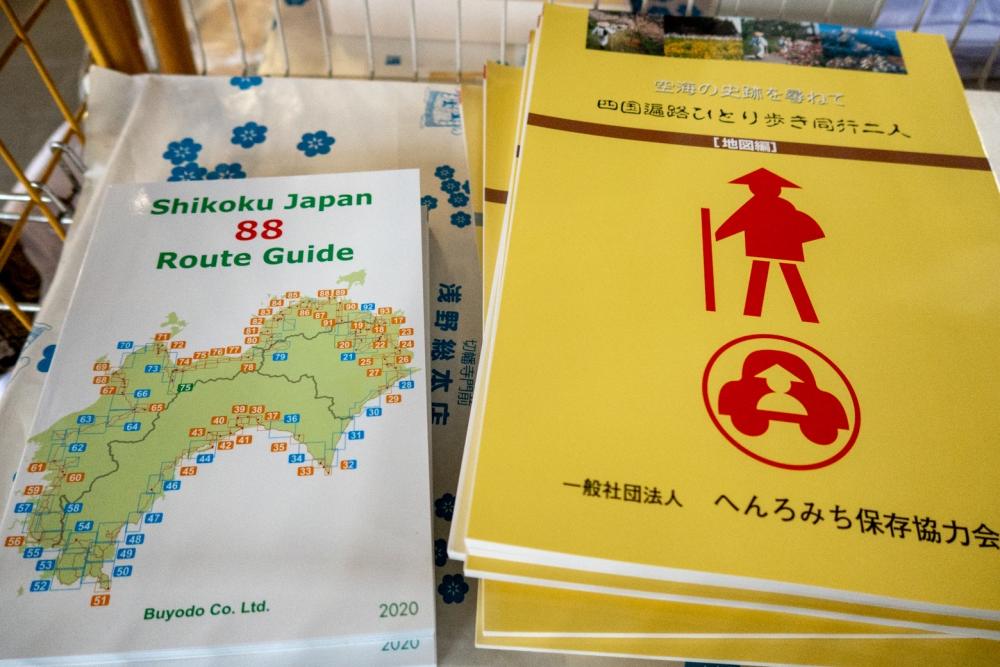
The English version is not just the translated book of the Japanese one.
First, the size and appearance of the books are different.
The pilgrimage routes have constantly changed over time, and in some cases, there are multiple routes between two temples.
The Japanese edition shows only selected most-commonly used routes, while the English book has many more routes including lesser-known old pilgrim trails and the Shikoku Nature Trails, so-called, Shikoku-no-michi, to meet the desire of international pilgrims to walk off the beaten path or at least unpaved natural trails as much as possible.
Most parts of the Shikoku pilgrimage trails are pretty well-marked.
Many ancient stone signposts that people donated to build hundreds of years ago still stand at the road corners. More modern red arrow stickers and hand-made signs by the locals and pilgrimage-related groups are put on the walls and electricity poles.
If you are visiting the temples by car, of course the car navigation system can take care of you perfectly.
Can pilgrims take the correct route only by following these signs? Probably not.
Occasionally, pilgrims have to go through some areas that have fewer signs or almost none. Old signs may still indicate the former route that is blocked now. Storms, fallen trees, and wild animals easily break the signs.
Realistically, unless you are from the area and know the route well, especially if you are unable to read or speak Japanese, it is strongly recommended to get the guidebook. The book is literally your lifeline!
I saw a pilgrim asking for a temple stamp on a long sheet of paper at a temple.
When making a pilgrimage in Japan, such as the Shikoku 88 temples pilgrimage or the Saikoku 33 Kannon temples pilgrimage, some want to have temples stamps not in a stamp book but on a long sheet of paper to make into a wall scroll.
You can also receive two stamps for both a stamp book and a sheet of paper at each temple.
Pilgrimage gear shops should have the long papers for you to purchase.
Even rolled up, the sheet is still long and hard to fit in your backpack let alone a shoulder bag. Since the sheet is made of very thin delicate cloth it requires special care to carry around while you are walking.
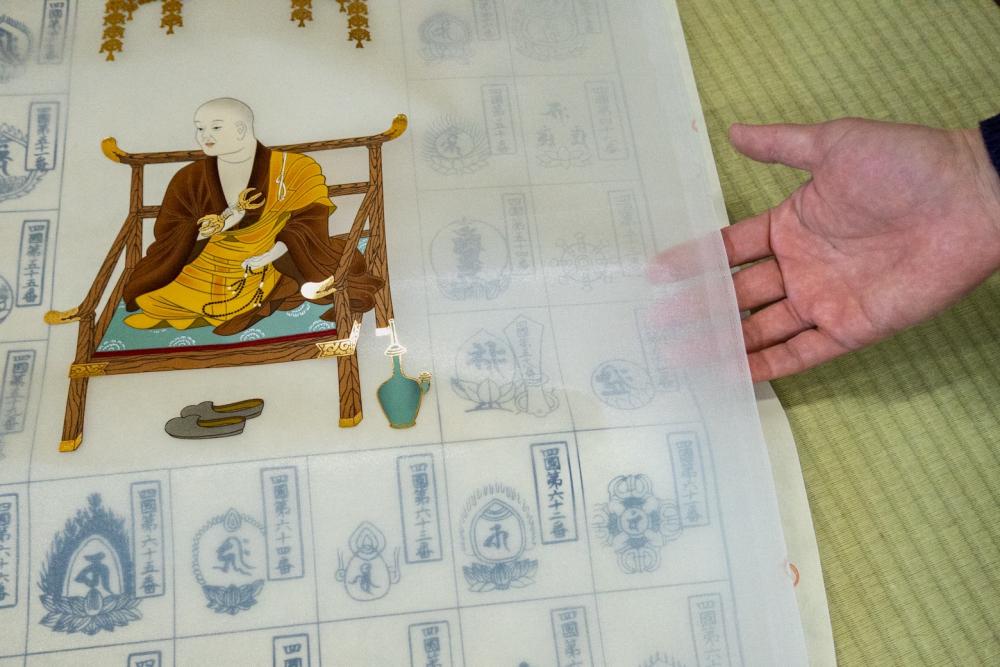
After collecting all the temple stamps, the wall scroll is not completed yet. You need to bring the sheet to a professional scroll mounter to place the sheet in the center of a brocade and attach the accessories. Only after that, you can hang the scroll on the wall.
These finalizing process take weeks and cost extra. When you are thinking whether you want a stamp book or a scroll, take these factors into consideration.
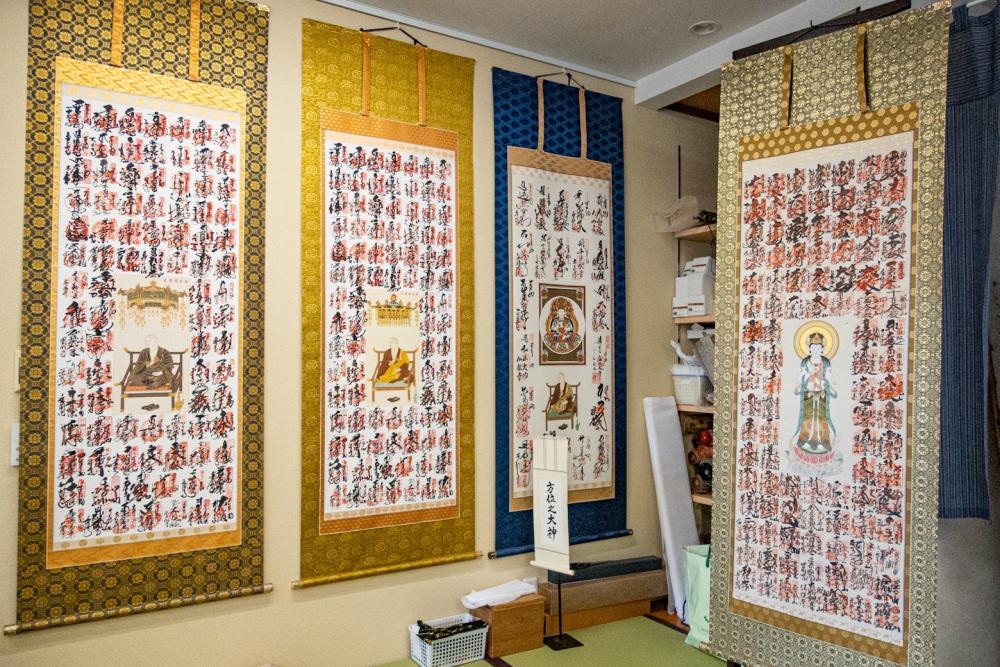
Kirihataji, the 10th temple of the Shikoku 88 temples pilgrimage
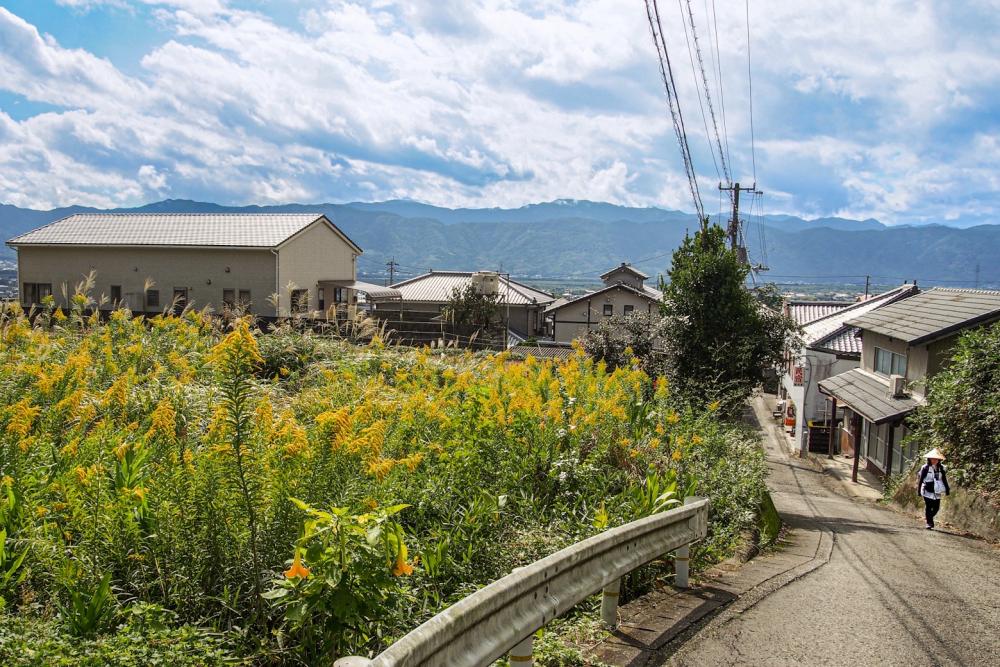
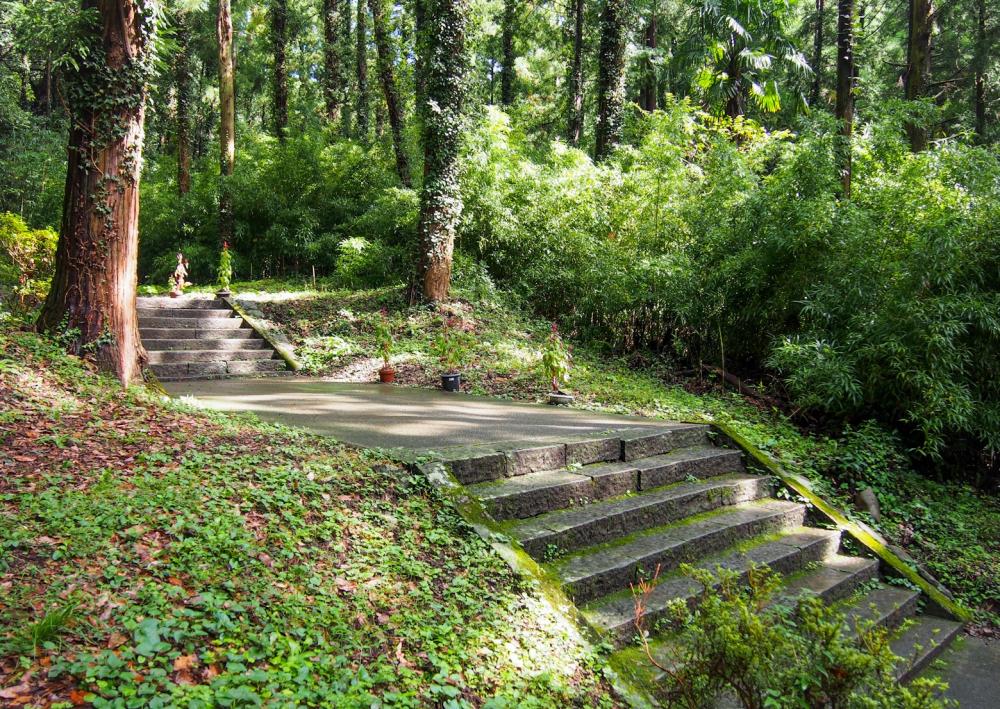

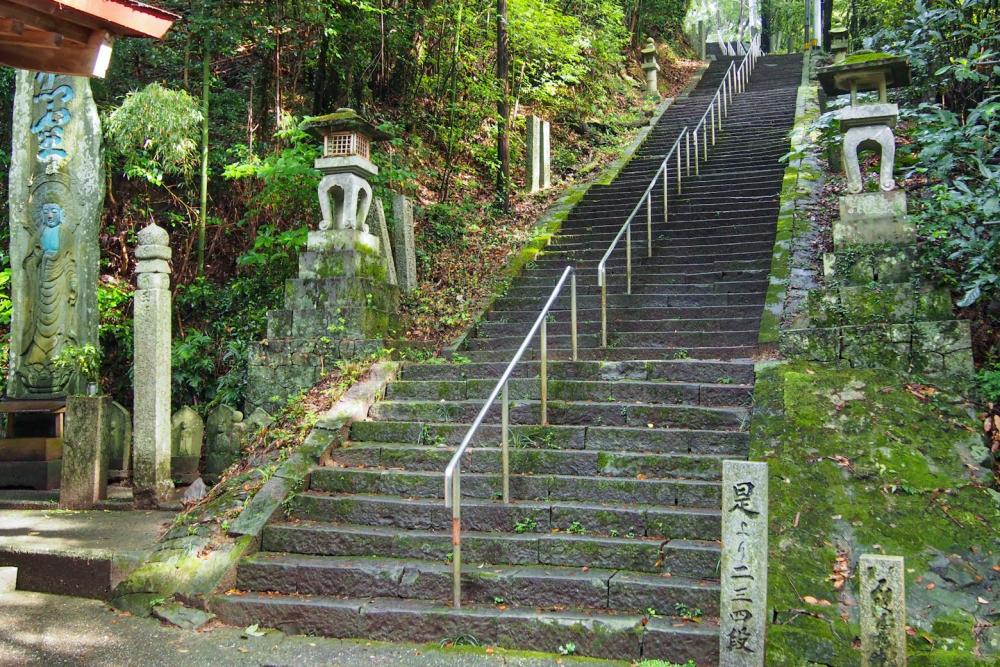
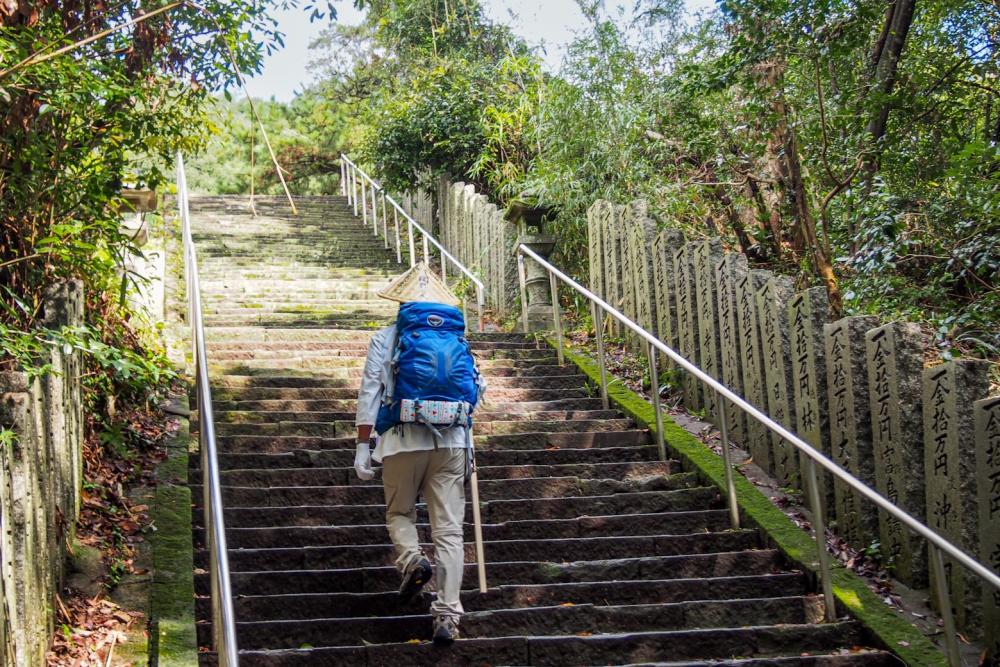
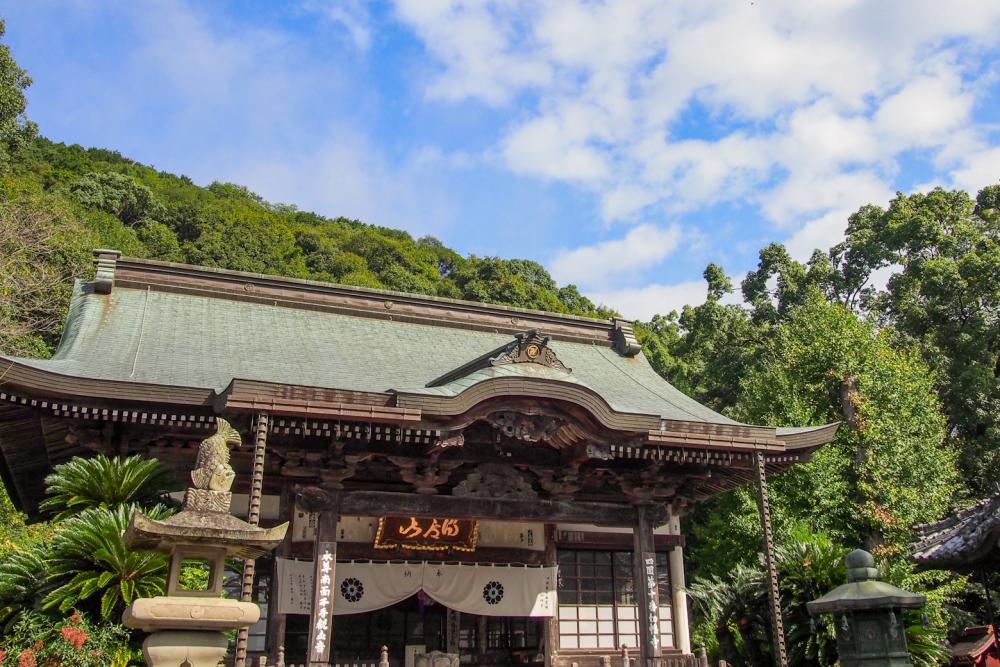
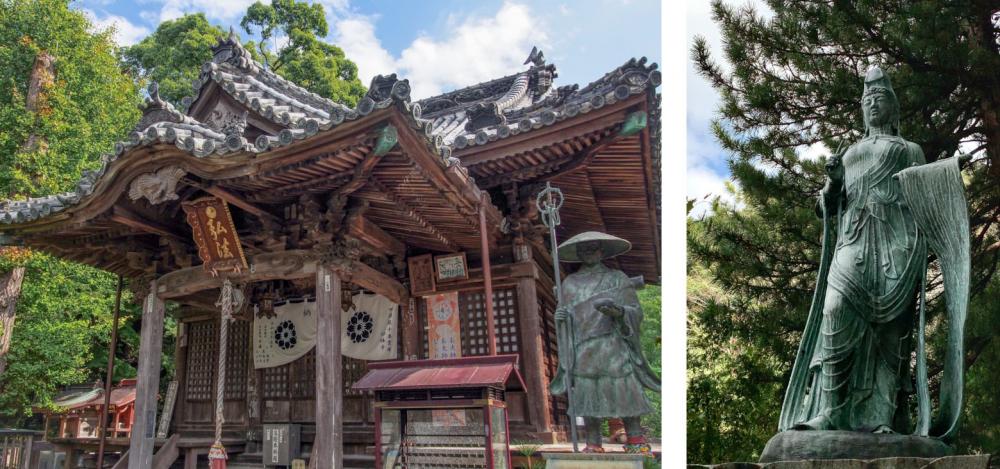
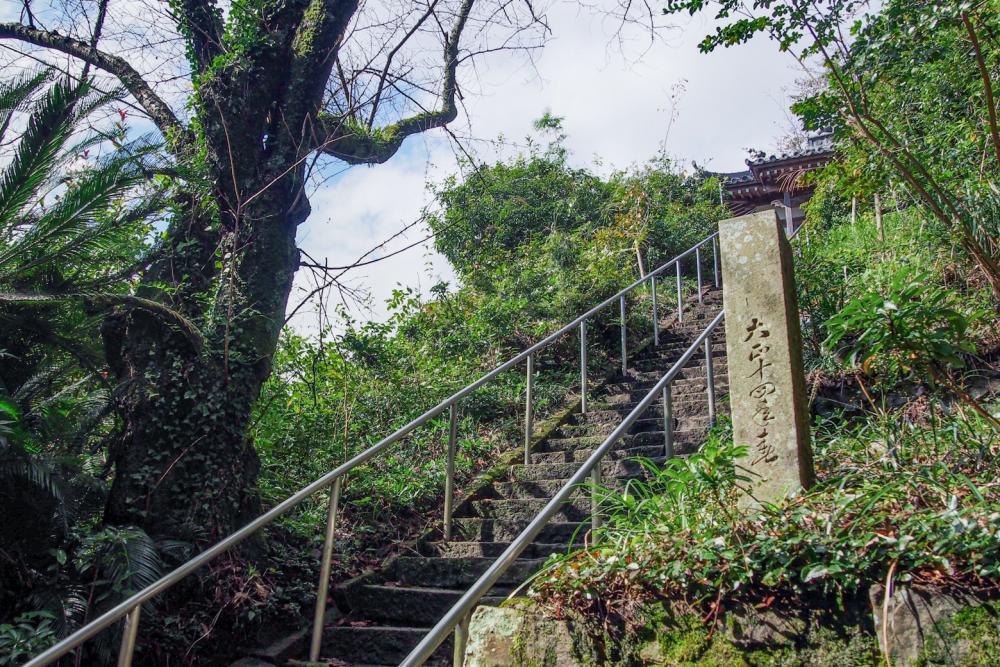
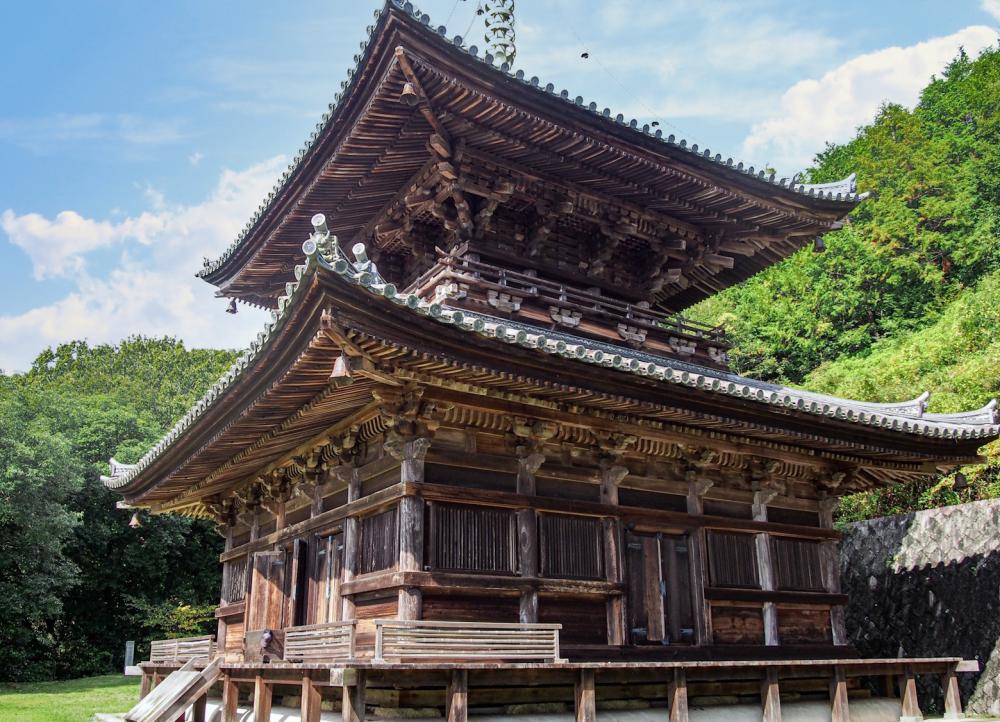
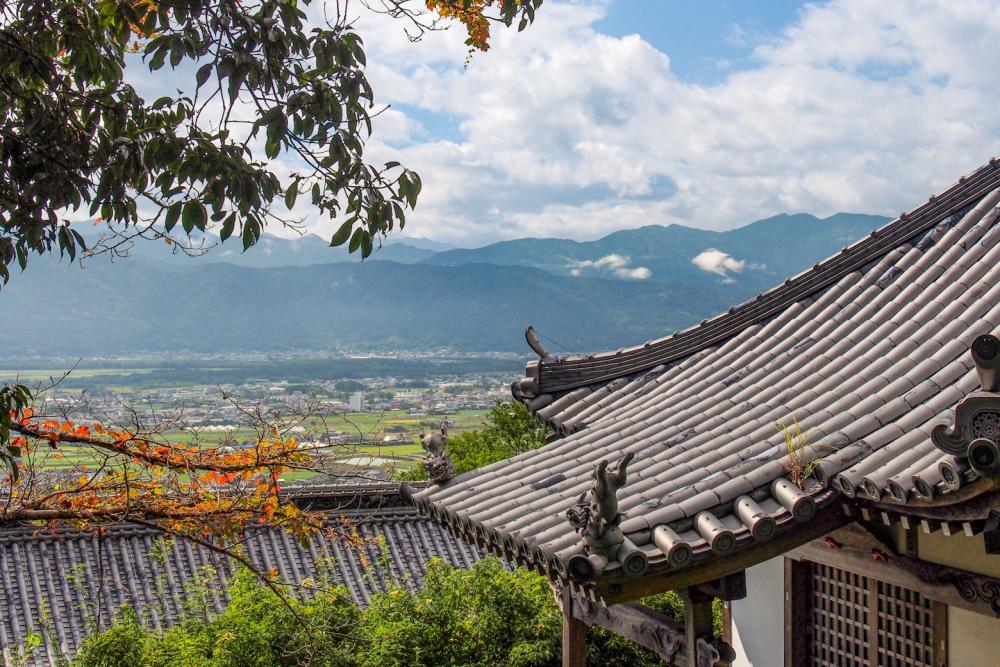
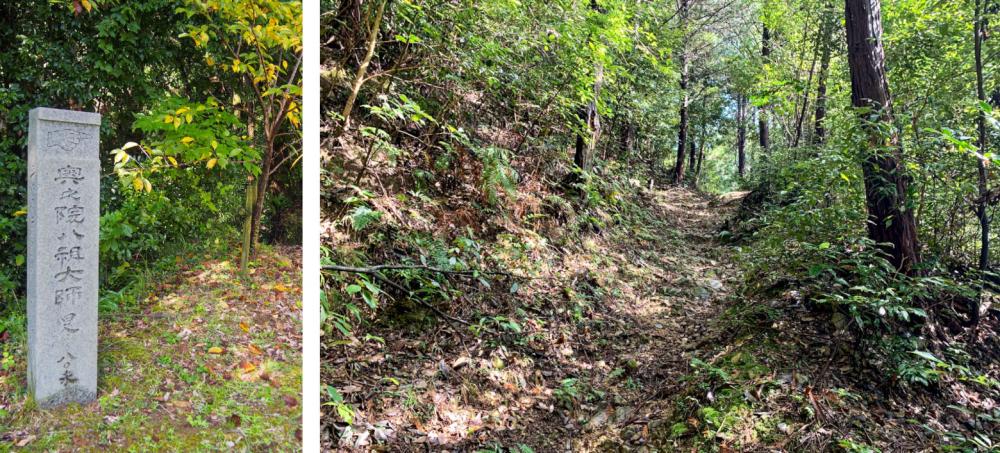
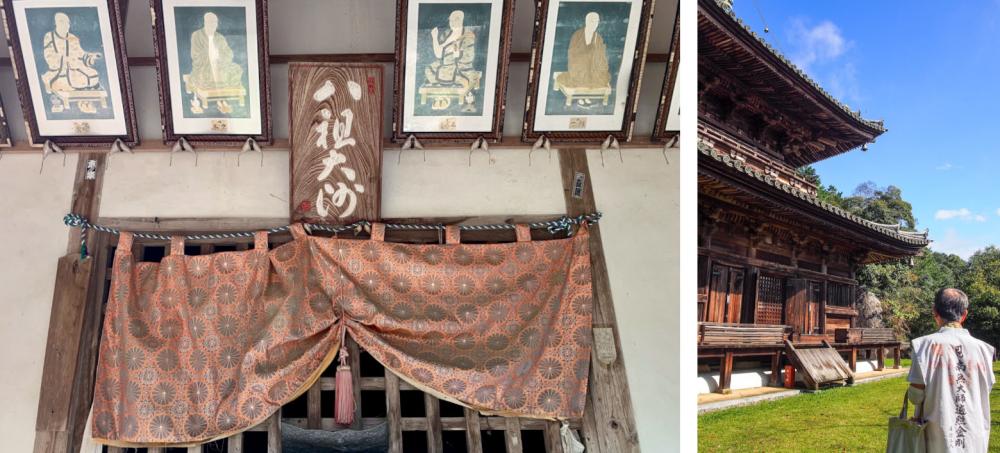
As we have shown, Kirihataji has some stairs.
Just imagining walking up and down these stairs with your heavy backpack, it seems a terrible nightmare.
But don’t get discouraged, there is a good news!
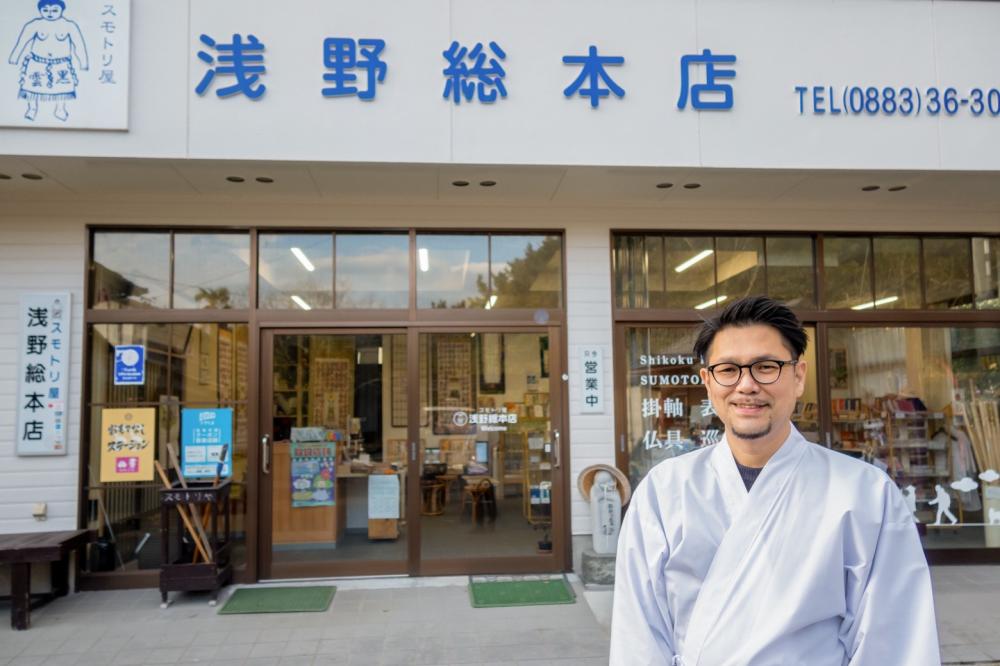
You can drop by Smotoriya Asano Sōhonten and leave your backpacks while visiting the temple.
Don’t hesitate to say hi to Mr. Asano, who is fluent in English as he has studied and worked abroad for years. When you have worries or concerns in the early stage of the pilgrimage, he is your go-to person!
●Sumotoriya Asano Sōhonten
173 Kannon, Kirihata, Ichibach, Awa, Tokushima Tel: 0883-36-3032
https://www.sumotoriya.com/
●Kirihataji, the 10th temple of the Shikoku 88 temples pilgrimage
129 Kannon, Kirihata, Ichibach, Awa, Tokushima Tel: 0883-36-3010
https://88shikokuhenro.jp/10kirihataji/
